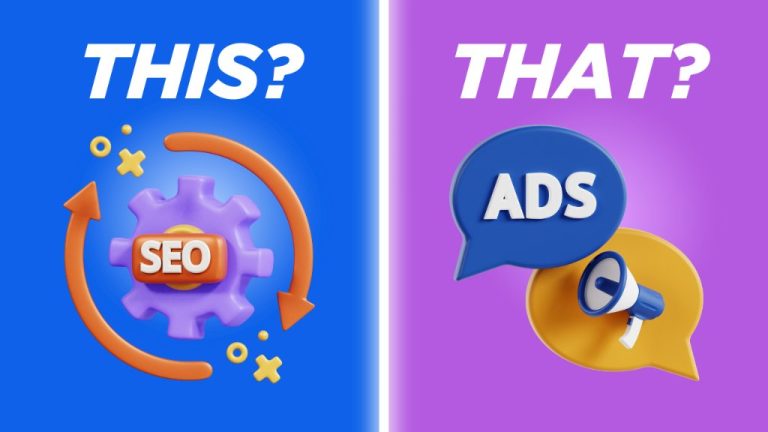How to do a Programmatic SEO of your Website in 2024
The SEO game is crucial for any business aiming for online visibility. Programmatic SEO isn’t just a buzzword, it’s a strategic approach to scaling up your website’s reach. This method leverages automation to generate a multitude of pages, targeting various long-tail keywords. The significance of this approach lies in its ability to enhance your website’s footprint on search engines, making it easier for potential customers to find you.
By embracing programmatic SEO, South Asia Digital can effectively target niche segments of its audience, creating tailored content that resonates with their specific search queries. This is particularly crucial as the competition for online visibility intensifies. Programmatic SEO helps in capturing a broader range of search queries, which traditional SEO methods might overlook.
Moreover, as search engine algorithms continue to evolve, they favor websites that cover topics comprehensively. Programmatic SEO allows for the creation of extensive content clusters, covering a topic from every angle. This not only boosts your website’s authority in the eyes of search engines but also provides your audience with valuable, in-depth information.
Programmatic SEO is not just about ranking higher, it’s about establishing South Asia Digital as a thought leader in its niche, offering valuable content that meets the specific needs of its audience. This can lead to increased traffic, higher engagement, and, ultimately, a significant boost in conversions and revenue.
What is Programmatic SEO?
Programmatic SEO is an advanced technique that blends the power of automation with the core principles of SEO to create a high volume of web pages targeting specific long-tail keywords. It’s a strategy particularly beneficial for businesses with extensive product ranges or services, like South Asia Digital, allowing them to target a vast array of search queries with precision.
At its core, programmatic SEO involves the use of software and algorithms to generate pages automatically. These pages are not just randomly created; they are meticulously tailored to rank for a multitude of specific search terms that your potential customers are likely to use. This is achieved by identifying patterns in search queries and then programmatically generating content that aligns with these patterns.
For example, if South Asia Digital offers digital marketing services across various industries, programmatic SEO can help create individual pages for each service in every industry it serves. This means having a unique page for terms like “digital marketing for healthcare,” “digital marketing for education,” and so on. Each of these pages would be optimized for SEO, containing unique, relevant content that provides value to the reader and meets their specific search intent.
The beauty of programmatic SEO lies in its scalability. While traditional SEO focuses on manually optimizing individual pages, programmatic SEO enables the creation of thousands of optimized pages in a fraction of the time. This doesn’t mean compromising quality for quantity. Each generated page needs to be rich in quality content, providing real value to the reader, and ensuring a good user experience.
Implementing programmatic SEO effectively requires a deep understanding of your target audience, their search behaviors, and the specific long-tail keywords they use. It also demands a robust content strategy and a scalable website architecture that can support a large number of pages without negatively impacting site performance.
In summary, programmatic SEO is a game-changer for large-scale SEO campaigns. It’s about leveraging technology to create a vast web presence, each part of which precisely targets a segment of your audience, thus significantly increasing your chances of ranking higher in search engine results and reaching more potential customers.
Regular SEO vs. Programmatic SEO
Understanding the differences between regular SEO and programmatic SEO is technical, as it helps in determining the right approach for different aspects of your online strategy. Both have their unique strengths and play vital roles in a comprehensive digital marketing plan.
Regular SEO: The Traditional Approach
- Focus on Individual Pages: Regular SEO typically involves optimizing individual pages on a website. This includes on-page optimization, content creation, and link building.
- Keywords Strategy: Regular SEO often targets more competitive, broad keywords. The focus is on ranking for these high-volume search terms.
- Manual Optimization: The process is more hands-on and manual, with a focus on crafting unique content for each page, optimizing meta tags, images, and ensuring overall page quality.
- Link Building: A significant part of regular SEO is building a strong backlink profile, which involves manually reaching out for link opportunities.
Programmatic SEO: The Scalable Approach
- Automating Content Creation: Programmatic SEO involves using automation to create large numbers of pages, each optimized for specific long-tail keywords.
- Scalability: The key advantage is scalability. It allows for the rapid creation of pages, targeting a wide array of search queries.
- Data-Driven: This approach is heavily reliant on data and analytics to identify trends and opportunities in search queries, which then inform the automated creation of content.
- Technical SEO Focus: While programmatic SEO also involves on-page optimization, there’s a heavier emphasis on the technical aspects like site structure, page speed, and crawlability.
Combining Both Approaches
- Synergistic Strategy: The most effective SEO strategy for South Asia Digital would be one that combines the strengths of both regular and programmatic SEO. Use regular SEO for core pages like your homepage, about page, and main service pages. Programmatic SEO can be used to expand your reach in specific niches.
- Balanced Keyword Strategy: Utilize regular SEO for broader, high-competition keywords and programmatic SEO for targeting a large number of long-tail, specific keywords.
- Content Quality and Quantity: While programmatic SEO can help in quickly scaling your content, maintaining the quality of content as in regular SEO is crucial for user engagement and conversion.
Regular SEO and programmatic SEO are not mutually exclusive but rather complementary strategies. For South Asia Digital, a balanced approach that leverages the precision and scale of programmatic SEO, along with the detailed, manual optimization of regular SEO, can create a robust, multifaceted SEO strategy.
The Three Pillars of Programmatic SEO
To successfully harness the power of programmatic SEO, it’s essential to build its strategy on three fundamental pillars. These pillars are the bedrock of effective programmatic SEO and ensure a balanced, comprehensive approach.
1. Technical SEO
- Website Infrastructure: The backbone of programmatic SEO is a robust website infrastructure capable of handling a large number of pages without performance issues. This includes fast loading times, mobile optimization, website front-end and a secure hosting environment.
- Scalable Architecture: A scalable site architecture is crucial. It should be designed to efficiently categorize and link a high volume of pages, ensuring they are easily crawlable and indexable by search engines.
- Automated Page Generation: Utilize tools and scripts to automate the creation of SEO-optimized pages. Each page must adhere to SEO best practices, including proper use of tags, structured data, and clean, crawlable code.
2. Content Quality
- Relevance and Value: While automation aids in scaling content creation, the content itself needs to be relevant, valuable, and engaging to your audience. It should address the specific needs and queries of your target market.
- Unique and Rich Content: Avoid thin or duplicated content. Each page should offer unique and rich information, enhancing the user’s knowledge and experience.
- Regular Updates and Refreshes: Keep your content fresh and updated. Regularly revisiting and updating your pages can improve their relevance and ranking over time.
3. User Experience (UX)
- Navigation and Structure: Ensure that your website is easy to navigate. A logical and intuitive structure helps users find the information they need quickly and efficiently.
- Page Speed: Fast page load times are vital for user satisfaction and SEO. Optimize images, leverage browser caching, and minimize code to enhance page speed.
- Mobile Responsiveness: With the increasing prevalence of mobile browsing, having a mobile-responsive design is non-negotiable. Your pages should look and function well on all devices.
By focusing on these three pillars – Technical SEO, Content Quality, and User Experience – South Asia Digital can create a programmatic SEO strategy that not only ranks well in search engines but also provides real value to its audience.
User Experience (UX) in Programmatic SEO
Incorporating a strong focus on User Experience (UX) is essential in programmatic SEO, especially for a company like South Asia Digital. While programmatic SEO emphasizes the creation of a large volume of content, ensuring each page provides a positive user experience is key to its success. Here’s how UX plays a critical role in programmatic SEO:
Importance of UX in SEO
- User Engagement: A good UX keeps users engaged on your site, reducing bounce rates and increasing the time spent on each page – factors that positively influence SEO rankings.
- Conversion Optimization: An intuitive and user-friendly design leads to better conversion rates. Users are more likely to take desired actions if they have a positive experience on your site.
- Mobile Optimization: With the increasing use of mobile devices, having a mobile-optimized UX is crucial. Google’s mobile-first indexing makes this a significant factor in SEO.
Integrating UX in Programmatic SEO
- Consistent Design: Ensure that your automated content pages maintain a consistent and intuitive design. This helps in building user trust and brand recognition.
- Page Load Speed: Optimize for fast loading times across all pages. Slow-loading pages can frustrate users and negatively impact SEO.
- Navigation and Accessibility: Make sure that users can easily navigate your site and find the information they need. Simple, clear navigation structures are important.
- Content Layout: Organize content in a user-friendly manner. Use headings, bullet points, and visuals to make the content easily digestible.
- Interactive Elements: Incorporate interactive elements like sliders.
Pick Your Long-Tail Keywords
Choosing the right long-tail keywords is a critical step in South Asia Digital’s programmatic SEO strategy. Long-tail keywords are more specific and less competitive than shorter, more general keywords, making them invaluable for targeting niche segments and improving search rankings.
Understanding Long-Tail Keywords
- Specificity: Long-tail keywords are typically longer phrases that are very specific to what you are selling or the information you are providing. They may have lower search volumes, but they often attract more qualified traffic.
- High Conversion Rates: Users searching with long-tail keywords usually have a clear intent and are further along in the buying process, leading to higher conversion rates.
How to Identify Long-Tail Keywords
- Use Keyword Research Tools: Tools like Ahrefs, SEMrush, or Google’s Keyword Planner can help identify long-tail keywords relevant to your business and audience.
- Analyze Search Queries: Look at the search queries that bring users to your site. Tools like Google Search Console can provide insights into the long-tail phrases users are searching for.
- Consider User Intent: Think about the specific problems or needs your audience might have and the kind of questions they would ask. Create long-tail keywords that answer these queries.
Incorporating Long-Tail Keywords in Your Strategy
- Target Each Stage of the Buyer’s Journey: Use long-tail keywords to create content that targets users at different stages of the buyer’s journey, from awareness to consideration to decision.
- Content Variety: Develop a variety of content types around these keywords, including blog posts, how-to guides, FAQs, product pages, and more.
Balancing Long-Tail and Short-Tail Keywords
- Complementary Strategy: While focusing on long-tail keywords, don’t neglect short-tail keywords. A balanced approach can help you capture both broad and niche segments of your audience.
- Keyword Clusters: Group related long-tail and short-tail keywords into clusters. This can help in creating comprehensive content that covers a topic in depth.
Regular Review and Adaptation
- Monitor Keyword Performance: Regularly track the performance of your long-tail keywords. Use analytics to understand which keywords are driving traffic and conversions.
- Stay Adaptive: As search trends and user behaviors change, be ready to update your keyword strategy. This ensures that your content remains relevant and effective.
By carefully selecting and strategically using long-tail keywords, South Asia Digital can create targeted, relevant, and valuable content that not only ranks well in search engines but also meets the specific needs of its audience.
How to do Programmatic SEO – Step-by-Step Guide
Implementing programmatic SEO involves a series of strategic steps, each building upon the other to create a comprehensive and effective SEO campaign. This guide will walk you through the process step by step.
Step 1: Understand Your Audience and Market
Before diving into programmatic SEO, it’s crucial to have a deep understanding of your target audience and market. This involves researching the specific needs, preferences, and search behaviors of your potential customers. Identify the niches within your market where there is a demand for information but a lack of supply. This will guide your content strategy and help you find opportunities to create pages that your audience is actively searching for.
Step 2: Conduct Extensive Keyword Research
The next step is to perform thorough keyword research. This involves identifying a range of keywords, especially long-tail keywords, that your target audience is using. Tools like Google Keyword Planner, Ahrefs, or SEMrush can be invaluable in this process. The goal is to compile a list of keywords that are relevant to your business and have a high search volume but low competition.
Step 3: Research Your Niche and Competitors
For South Asia Digital, conducting thorough research of its niche and competitors is a vital step in crafting a successful programmatic SEO strategy. This research provides insights into market trends, customer needs, and competitive benchmarks, guiding the development of a targeted SEO approach.
Analyzing Your Niche
- Understand Your Audience: Deeply understand the needs, preferences, and online behavior of your target audience. Use tools like Google Analytics to analyze user behavior on your website.
- Identify Market Trends: Stay updated with the latest trends in your niche. Use industry reports, news, and online forums to keep track of emerging needs and interests.
Competitor Analysis
- Identify Key Competitors: Determine who your main competitors are in the digital space. Look at both direct competitors and those that rank well for your target keywords.
- Analyze Competitor Strategies: Examine the SEO strategies of these competitors. Look at the keywords they are targeting, the structure of their websites, their content approach, and their backlink profile.
- Learn from Their Successes and Failures: Identify what’s working well for your competitors and where they might be falling short. This can provide valuable insights into opportunities for South Asia Digital.
Utilizing SEO Tools
- Keyword Gap Analysis: Use tools like SEMrush or Ahrefs for keyword gap analysis to find opportunities that competitors might have overlooked.
- Content Analysis: Analyze the type of content that performs well in your niche. This includes the format, tone, and topics covered by successful competitors.
Gathering Consumer Insights
- Feedback and Reviews: Look at customer feedback and reviews on competitor sites. This can reveal what customers appreciate and what they feel is lacking.
- Social Media Listening: Use social media listening tools to understand the conversations happening around your niche. This can offer unfiltered insights into customer opinions and needs.
Applying Insights to Your Strategy
- Informed Content Creation: Use the insights gathered to inform your content creation. Tailor your content to address the gaps and opportunities identified in your research.
- Differentiate Your Brand: Find unique angles or untapped areas within your niche that South Asia Digital can capitalize on to stand out from competitors.
Thorough niche and competitor research not only guides South Asia Digital in creating more effective SEO content but also helps in positioning the brand strategically within the market. This approach ensures that the programmatic SEO efforts are not just about quantity but also about delivering quality content that resonates with the target audience.
Step 4: Develop a Scalable Site Architecture
For programmatic SEO to be effective, your website must be able to handle a large number of pages without compromising on performance. This involves creating a scalable site architecture that organizes content logically and ensures a good user experience. Your site structure should facilitate easy navigation and help search engines understand and index your content efficiently.
Step 5: Build Your Landing Page Template
Creating an effective landing page template is a pivotal step in South Asia Digital’s programmatic SEO strategy. A well-designed template ensures consistency across pages, improves user experience, and optimizes for conversions, all while maintaining the efficiency of automated content generation.
Key Elements of a Landing Page Template
- Clear and Compelling Headline: The headline should immediately capture the visitor’s attention and clearly convey the value proposition.
- Engaging Subheadings: Use subheadings to break up text and guide users through the page. They should be informative and include relevant keywords.
- High-Quality Content: The content should be relevant, informative, and tailored to the target audience. Include key information about products or services, and ensure it aligns with the long-tail keywords you are targeting.
- Strong Call-to-Action (CTA): Your CTA should be prominent and persuasive, encouraging users to take the desired action, whether it’s making a purchase, signing up for a newsletter, or contacting for more information.
- Visual Elements: Incorporate high-quality images or videos that complement the text and enhance the overall appeal of the page.
- User Testimonials or Reviews: Include social proof to build trust and credibility. Testimonials or reviews can significantly impact the decision-making process of potential customers.
- Optimized for Conversion: Every element of the page should be optimized to guide the user towards the conversion goal. This includes the layout, color scheme, and the placement of CTAs.
- Mobile Responsiveness: Ensure the template is fully responsive, providing a seamless experience across all devices.
- Fast Loading Speed: Optimize the template for quick loading times, as page speed is a crucial factor for both SEO and user experience.
- SEO Elements: Incorporate SEO best practices in the template, such as meta tags, header tags, and keyword-rich content.
Developing the Template
- Customization for Scalability: The template should be customizable to suit different types of content while maintaining a consistent look and feel.
- Testing and Refinement: Before full-scale implementation, test the template for user experience, conversion effectiveness, and SEO performance. Use feedback and data to make necessary adjustments.
Automation and Consistency
- Automation Tools: Use CMS and automation tools to streamline the process of generating and publishing landing pages.
- Consistency Across Pages: Ensure consistency in design and messaging across all landing pages. This helps in building brand recognition and trust.
By building a robust landing page template, South Asia Digital can efficiently roll out multiple pages that are not only SEO optimized but also designed to engage and convert visitors.
Step 6: Automate Content Creation
Utilize software and tools to automate the creation of web pages. Each page should be designed to target specific keywords from your research. However, it’s important to maintain quality in your content. The pages should provide value, be informative, and be engaging to the readers. Automation should assist in the process, not replace the need for quality, well-researched content.
Step 7: Optimize for SEO
Each programmatically created page should be optimized for SEO. This includes optimizing title tags, meta descriptions, and headers with targeted keywords, ensuring fast page loading times, and making sure the content is mobile-friendly. Remember, each page should offer a unique value to stand out in the search results.
Step 8: Monitor and Refine
After launching your programmatic SEO pages, continuously monitor their performance. Use tools like Google Analytics to track traffic, engagement, and conversion rates. Based on the data, refine and adjust your strategy. SEO is not a set-and-forget process; it requires ongoing attention and optimization.
Step 9: Scale Up Gradually
Start with a smaller set of pages and scale up gradually. This allows you to learn from early successes and mistakes and apply those learnings as you expand your programmatic SEO efforts.
By following these steps, South Asia Digital can effectively implement a programmatic SEO strategy, significantly enhancing its online presence and driving more organic traffic to its website, even you can do a press release to increae online visiblity.
Drive Revenue with Programmatic SEO Services from South Asia Digital
For South Asia Digital, harnessing the power of programmatic SEO is not just about improving search engine rankings, it’s a strategic move to drive substantial revenue growth. By implementing programmatic SEO, South Asia Digital SEO services can significantly expand their digital footprint, tapping into new markets and reaching more customers than ever before.
Targeting Niche Markets
Programmatic SEO allows to creation of content that targets very specific niches. This is particularly effective for reaching segments of the market that are often overlooked by competitors. By addressing these unique customer needs, South Asia Digital can attract a dedicated audience that is more likely to convert, thus driving up revenue.
Scaling Content Production
One of the primary advantages of programmatic SEO is its ability to scale content production massively. This scalability means that South Asia Digital can cover a broader range of topics and keywords, increasing the likelihood of appearing in search results for a wide variety of queries. This extensive online presence directly correlates with increased website traffic, lead generation, and ultimately, revenue.
Enhancing User Experience
Programmatic SEO isn’t just about creating a large number of pages; it’s also about ensuring that each page offers a valuable and engaging user experience. By delivering content that is relevant and useful, South Asia Digital can improve user engagement metrics like time on site and bounce rate, which are important factors in search engine rankings. A better ranking leads to more visibility, attracting more traffic, and thereby increasing potential revenue.
Data-Driven Insights
Using programmatic SEO tools, South Asia Digital can gather and analyze a wealth of data about their audience’s search behavior. This data can inform not only SEO strategy but also broader marketing and product development strategies. Understanding what your audience is searching for helps in tailoring products and services to their needs, thus boosting sales.
Long-Term Growth
Implementing programmatic SEO is a long-term growth strategy. Unlike paid advertising, which stops generating traffic once the budget is depleted, the pages created through programmatic SEO continue to attract traffic over time. This means that the initial investment can lead to sustained revenue growth, making it a cost-effective strategy in the long run.
In conclusion, programmatic SEO is a powerful tool for revenue generation. By targeting niche markets, scaling content production, enhancing user experience, leveraging data-driven insights, and focusing on long-term growth, South Asia Digital can use programmatic SEO to not just compete but lead in the digital marketplace.
Are You Ready for a Programmatic SEO Journey?
The programmatic SEO journey is a significant step, one that promises substantial rewards in terms of increased online visibility, traffic, and ultimately, revenue. However, it’s crucial to assess whether your organization is prepared for this venture. Here are key considerations to determine your readiness:
Assessing Your Digital Infrastructure
- Website Capability: Ensure that your website is equipped to handle a large influx of new pages without compromising on performance. This involves having a robust hosting solution and an efficient content management system.
- Technical SEO Health: Check that your website is technically sound, with no major SEO issues that could hinder the performance of your new pages. This includes mobile responsiveness, fast loading times, and clean, crawlable code.
Resource Availability
- Content Creation Team: Do you have the manpower and expertise to create high-quality, SEO-optimized content at scale? While automation aids in the process, the human touch is essential for ensuring content quality and relevance.
- SEO and Technical Expertise: Programmatic SEO requires a blend of SEO knowledge and technical skills. Assess if your team has the necessary skills or if you need to bring in external expertise.
Strategic Alignment
- Business Objectives: Align your programmatic SEO efforts with your overall business objectives. Are you looking to enter new markets, target specific customer segments, or boost specific product lines?
- SEO Strategy: Programmatic SEO should be part of a broader SEO strategy, complementing other SEO efforts like link building, local SEO, and content marketing.
Commitment to Continuous Improvement
- Programmatic SEO is not a one-time effort. It requires ongoing analysis, testing, and refinement. Ensure that you’re prepared for this continuous cycle of improvement.
Budget and Time Considerations
- Consider the budget and time required to implement and maintain a programmatic SEO strategy. While it’s a cost-effective strategy in the long run, it requires an upfront investment of resources.
If South Asia Digital is ready in these aspects, then embarking on a programmatic SEO journey can be a game-changer. This approach can scale your SEO efforts exponentially, driving more targeted traffic to your site and significantly boosting your online presence.
Pros and Cons of Programmatic SEO
As with any strategic business initiative, programmatic SEO comes with its own set of advantages and challenges. Understanding these will help South Asia Digital make informed decisions and prepare adequately for a successful implementation.
Pros of Programmatic SEO
- Scalability: Programmatic SEO allows for the creation of vast amounts of content, targeting a wide array of keywords. This scalability is key to capturing a larger share of search traffic.
- Efficiency: By automating the content creation process, South Asia Digital can produce a high volume of pages more efficiently than would be possible manually, saving time and resources.
- Targeted Content: Programmatic SEO enables the creation of highly targeted content, tailored to specific segments of your audience. This increases the relevance and value of your pages to your users.
- Improved Search Visibility: With more content targeting a broader range of keywords, you significantly increase your chances of ranking in search engine results, leading to increased organic traffic.
- Data-Driven Approach: Programmatic SEO is rooted in data and analytics, allowing for a more informed and strategic approach to content creation.
Cons of Programmatic SEO
- Quality Control Challenges: Ensuring consistent quality across thousands of automated pages can be challenging. There’s a risk of generating content that lacks depth or relevance if not carefully managed.
- Resource Intensive: While the content creation is automated, programmatic SEO still requires significant upfront investment in terms of technology, expertise, and time to set up and manage effectively.
- Potential for SEO Penalties: If not implemented correctly, programmatic SEO can lead to issues like duplicate content, thin content, or unnatural link patterns, which can attract penalties from search engines.
- Complexity: Managing and optimizing a large number of pages can become complex, requiring sophisticated tools and skilled personnel.
- Changing Search Engine Algorithms: Search engines are constantly evolving, and what works today in SEO may not work tomorrow. This requires a commitment to staying updated and adapting strategies accordingly.
In conclusion, while programmatic SEO offers significant benefits in terms of scalability and efficiency, it also demands careful planning, quality control, and ongoing management. For South Asia Digital, weighing these pros and cons is essential to determine if programmatic SEO aligns with its digital marketing goals and resources.
3. User Experience (UX)
- Navigation and Structure: Ensure that your website is easy to navigate. A logical and intuitive structure helps users find the information they need quickly and efficiently.
- Page Speed: Fast page load times are vital for user satisfaction and SEO. Optimize images, leverage browser caching, and minimize code to enhance page speed.
- Mobile Responsiveness: With the increasing prevalence of mobile browsing, having a mobile-responsive web design is non-negotiable. Your pages should look and function well on all devices.
By focusing on these three pillars – Technical SEO, Content Quality, and User Experience – South Asia Digital can create a programmatic SEO strategy that not only ranks well in search engines but also provides real value to its audience.
Common Programmatic SEO Problems to Avoid
While programmatic SEO offers immense benefits, there are potential pitfalls that South Asia Digital should be aware of to ensure the success of its strategy. Avoiding these common problems will help maintain the integrity and effectiveness of your programmatic SEO efforts.
1. Low-Quality Content
- The Problem: Creating a large number of pages can sometimes lead to compromised content quality. Pages with thin, irrelevant, or duplicated content can harm your SEO rather than help it.
- The Solution: Maintain a strong focus on quality. Ensure that each page offers unique, valuable, and engaging content tailored to your audience’s needs.
2. Keyword Cannibalization
- The Problem: With numerous pages targeting similar keywords, there’s a risk of keyword cannibalization, where your pages compete against each other in search rankings.
- The Solution: Carefully plan your keyword strategy to avoid overlap. Each page should target a distinct set of keywords or search queries.
3. Poor User Experience
- The Problem: Focusing solely on SEO and neglecting user experience can lead to a high bounce rate and low user engagement.
- The Solution: Balance SEO with a strong emphasis on user experience. Ensure fast loading times, mobile optimization, and intuitive navigation.
4. Ignoring Technical SEO
- The Problem: Overlooking technical SEO aspects can lead to issues like slow site speed, crawl errors, and broken links, especially when dealing with a large number of pages.
- The Solution: Regularly audit your site for technical SEO health. Use tools to monitor site speed, mobile-friendliness, and other technical factors.
5. Over-Automation
- The Problem: Excessive reliance on automation can lead to generic, uninspired content that fails to engage users.
- The Solution: Find the right balance between automation and human input. While leveraging automation for efficiency, ensure that content has a personalized touch.
6. Neglecting Analytics and Adaptation
- The Problem: Failing to monitor the performance of your pages can result in missed opportunities for optimization and improvement.
- The Solution: Regularly analyze your page performance using analytics tools. Adapt and refine your strategy based on data-driven insights.
By being aware of and actively addressing these common programmatic SEO problems, South Asia Digital can ensure that its programmatic SEO strategy is not only effective in increasing its search engine presence but also in delivering a quality experience to its users.
Find Your Head Terms and Modifiers
To maximize its programmatic SEO strategy, it’s crucial to identify and utilize the right head terms and modifiers. This step forms the foundation of creating targeted, effective content that resonates with your audience and ranks well in search engines.
Understanding Head Terms
- Definition: Head terms, also known as primary keywords, are broad, highly searched terms that are generally competitive. They are usually short, one or two words, and encompass a wide range of topics within your industry.
- Identification: Use SEO tools to identify the most relevant and high-volume head terms in your industry. These should be closely aligned with the core offerings and expertise of South Asia Digital.
Leveraging Modifiers
- Role of Modifiers: Modifiers are words or phrases added to head terms to create long-tail keywords. They help in narrowing down the search queries and targeting specific user intents.
- Types of Modifiers: Modifiers can include geographic locations, product features, customer segments, or any specific qualifier that makes the search more precise. Examples include “affordable,” “in Mumbai,” or “for small businesses.”
Combining Head Terms and Modifiers
- Strategic Combination: The key is to strategically combine head terms with relevant modifiers. This approach allows targeting both broad and niche market segments, increasing the chances of your content ranking well.
- Example Combinations: For South Asia Digital, combining head terms related to digital marketing services with modifiers can result in long-tail keywords like “digital marketing strategies for startups” or “social media marketing tools for small businesses.”
Tools and Techniques
- Keyword Research Tools: Use tools like Google Keyword Planner, Ahrefs, or SEMrush to find effective combinations of head terms and modifiers.
- Analyzing Competitors: Look at what head terms and modifiers your competitors are targeting. This can provide insights into gaps in the market that South Asia Digital can capitalize on.
Application in Content
- Content Creation: Once you have identified your head terms and modifiers, integrate them into your content. Ensure they are naturally incorporated into titles, headings, meta descriptions, and throughout the body of your content.
- Content Variety: Create a variety of content types targeting these terms, including blog posts, product pages, FAQs, and informational content, to address different aspects of the user’s search intent.
Regularly Monitor and Analyze Your Website’s Performance
For South Asia Digital, regularly monitoring and analyzing website performance is a critical component of a successful programmatic SEO strategy. This ongoing process helps in understanding the impact of your SEO efforts, identifying areas for improvement, and making data-driven decisions to enhance the effectiveness of your website.
Setting Up Monitoring Systems
- Analytics Tools: Utilize tools like Google Analytics to track website traffic, user behavior, conversion rates, and other key performance indicators (KPIs).
- SEO Tracking Tools: Employ SEO-specific tools like SEMrush, Ahrefs, or Moz to monitor your search rankings, keyword performance, backlink profile, and SEO health.
Key Metrics to Track
- Traffic Metrics: Keep an eye on the volume of traffic, sources of traffic (organic, direct, referral, social), and the behavior of users once they land on your site.
- Engagement Metrics: Analyze user engagement through metrics like bounce rate, average session duration, and pages per session.
- Conversion Metrics: Track how effectively your site converts visitors into leads or customers. Monitor metrics like conversion rate, lead generation rate, and cost per acquisition.
Analyzing SEO Performance
- Keyword Rankings: Regularly check how your pages rank for targeted keywords, especially the long-tail keywords targeted in your programmatic SEO efforts.
- Page Performance: Evaluate the performance of individual pages in terms of traffic, engagement, and conversions. Identify which types of content and topics resonate most with your audience.
Responding to Data Insights
- Adjusting Strategies: Use insights from data to refine your SEO strategies. This could involve tweaking your
- , revising keywords, or changing your site layout.
- Content Updates: Regularly update and refresh content to maintain its relevance and effectiveness.
Regular Audits
- Technical Audits: Conduct regular technical SEO audits to identify and fix issues related to website
- , crawl errors, broken links, and other technical aspects.
- Content Audits: Periodically review your content to ensure it remains accurate, relevant, and engaging.
Competitive Analysis
- Benchmark Against Competitors: Compare your website’s performance against key competitors to understand where you stand in the market and identify areas for competitive advantage.
Regular monitoring and analysis are not just about tracking metrics; they are about gaining actionable insights that can drive continuous improvement in South Asia Digital’s programmatic SEO strategy. By staying informed and responsive to the data, you can adapt to changes in user behavior and search engine algorithms, keeping your website optimized for both users and search engines.







